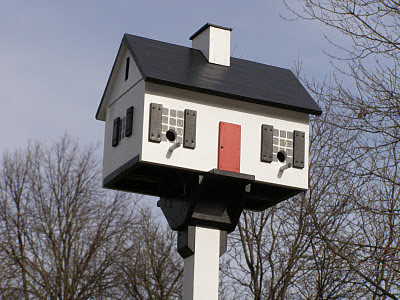

Recycling T. Aaron Levy Middle School / Central Tech
by Samuel D. Gruber (all photos copyright Samuel D. Gruber)
When most people think about saving old Syracuse schools, it is Blodgett and the former Central High School that most likely come to mind. PACNY and OHA sponsored a discussion on the fates of these buildings last year.
Much closer to (my) home is the former T. Aaron Levy Middle School on Harvard Place between Fellows and Westmorland Avenues. Built in 1924 as the William Nottingham Junior High School (soon after High School), the building is now serving as the temporary home of the Institute of Technology. As far as I know, plans are still on the books for the Institute to return downtown to new wing adjacent to the old Central High School (Central Tech). That will leave the Harvard Place building empty.
My solution - first thought of last year by my daughter when Nottingham High School senior - is to move the local Food Coop (Syracuse Real Food Cooperative, Inc.) to the school, and develop the school building in a public-private partnership. The ground floor would allow an expanded store, and the upper floors would make fine apartments - or perhaps one wing could be apartments and the other studios.



The Food Coop, now located a ten minute walk away on 618 Kensington Ave., had its plans to expand in the former Hematology / Oncology Center (previously Young Israel Synagogue) on Fellows at East Genesee scotched by neighbors worried about the increase in traffic - by delivery trucks and shoppers. I also thought the price that the Coop was going to pay for the property was rather steep, too, considering that they would have remodel, and then their members would be stuck paying the bill for a long time.
Moving the Food Coop to the former Nottingham/Levy would be a much better solution. The ground floors are already large and airy, there is an adequate parking and loading docks, and the neighbors have experienced students for decades - so how could they possibly complain about MORE noise and litter. Since the city already owns the school, they could lease the space to the COOP, provided the COOP paid for renovations. The money then planned for a purchase price could go right into developing the new store. There is a kitchen too, to encourage a catering business.
If the COOP just needed to use the cafeteria space, other ground floor spaces for might be leased to other tenants. Imagine a bakery on the premises and the smell of fresh bread in the neighborhood. Perhaps the gymnasium could be preserved for community use. or leased out for recreation purpose, perhaps through the Westcott Community Center. The playing field could remain green space for organized sports - or it could be landscaped as a recreational park.
The City should be able to recoup costs for insurance and maintenance, and some repair, through partnering with a private developer who could develop the second and third floors for residential or studio use. There are already several former schools on the Eastside that have been very effectively turned into housing, and one look at the example of the Delevan Center downtown for effective conversion to studios.
Over the past year I've begun to talk to a number of people in the neighborhood casually about this idea - and they seem to like it. The next step is to for neighbors brainstorm with school and city officials, and some experienced developers and architects.
I really think this can be done. What do you think?


A Little History
In the early 20th century the City of Syracuse was expanding rapidly, and the influx of immigrants put a strain on the school system. Building new schools was one of the big political issues of the day (sound familiar?). Under Mayor Walrath a massive building program began, but the mayor and School Board (under Superintendent Percy Hughes) argued about the number, size, and placement of new schools (sound familiar?). The Herald reported on May 18, 1923 that the city finally decided on the Fellows Avenue site for the William Nottingham Junior High School, after protests of plans to build the school within Thornden Park, off south Beech. Mayor Walrath battled Hughes over which plan to use for the building - Walrath pushed for a plan by Gordon Wright employed in the 19th Ward, which was less expensive and housed more students. Hughes and board held out successfully for a plan by Albert Brockway, first for the Thornden site, and then settling for Fellows Avenue. The school opened in September 1924 (see Syracuse Herald, Sunday, September 07, 1924). By the end of the decade is was renamed William Nottingham High School.
In 1953 the district opened a new high school on Meadowbrook at East Genesee, the first new school built since 1930, and transferred the Nottingham name. The old school was renamed the T. Aaron Levy Junior High School, later changed to T Aaron Levy Middle School, a name it retained until 2009, when Levy was disbanded, with 7th and 8th graders attending other schools, and the school became the temporary home of Central Tech. T. Aaron Levy had served on the School Board in the early part of the century. He was reformer, and worked hard to united different ethnic and religious groups in the city into a civic community. Levy advised the Roosevelt administration and was instrumental in Pioneer Homes being erected as one the first public housing projects in the United States. Levy was also Jewish, a member of Temple Society of Concord. That probably counted for a lot in the school naming, since the population of the neighborhood in the 1950s was significantly Jewish, and Concord's Rabbi Benjamin Friedman lived just up the street. Friedman also participated in the dedication of the new Nottingham on October 19, 1953.





























.JPG)





